-
 Bitcoin
Bitcoin $107,323.9971
-0.42% -
 Ethereum
Ethereum $2,442.7415
-1.58% -
 Tether USDt
Tether USDt $1.0005
0.00% -
 XRP
XRP $2.0902
-4.49% -
 BNB
BNB $645.3561
-0.33% -
 Solana
Solana $140.8832
-2.81% -
 USDC
USDC $0.9999
0.01% -
 TRON
TRON $0.2713
0.17% -
 Dogecoin
Dogecoin $0.1611
-2.35% -
 Cardano
Cardano $0.5556
-2.75% -
 Hyperliquid
Hyperliquid $36.8045
-1.10% -
 Bitcoin Cash
Bitcoin Cash $494.4393
-1.23% -
 Sui
Sui $2.6406
-2.97% -
 Chainlink
Chainlink $13.0846
-1.74% -
 UNUS SED LEO
UNUS SED LEO $9.0127
0.09% -
 Avalanche
Avalanche $17.4023
-1.37% -
 Stellar
Stellar $0.2339
-3.25% -
 Toncoin
Toncoin $2.8330
-0.57% -
 Shiba Inu
Shiba Inu $0.0...01124
-3.38% -
 Litecoin
Litecoin $84.9229
-0.60% -
 Hedera
Hedera $0.1432
-3.84% -
 Monero
Monero $311.0740
-1.35% -
 Bitget Token
Bitget Token $4.6591
3.94% -
 Dai
Dai $1.0001
0.01% -
 Ethena USDe
Ethena USDe $1.0000
-0.01% -
 Polkadot
Polkadot $3.3033
-1.64% -
 Uniswap
Uniswap $6.9221
-4.55% -
 Pi
Pi $0.5546
-4.86% -
 Aave
Aave $257.5046
-1.30% -
 Pepe
Pepe $0.0...09215
-3.26%
How to interpret the KD indicator repeatedly entangled around 50?
When the KD indicator hovers around 50 in crypto trading, it signals market indecision, requiring patience and confirmation from volume or other indicators before entering trades.
Jun 27, 2025 at 05:00 pm
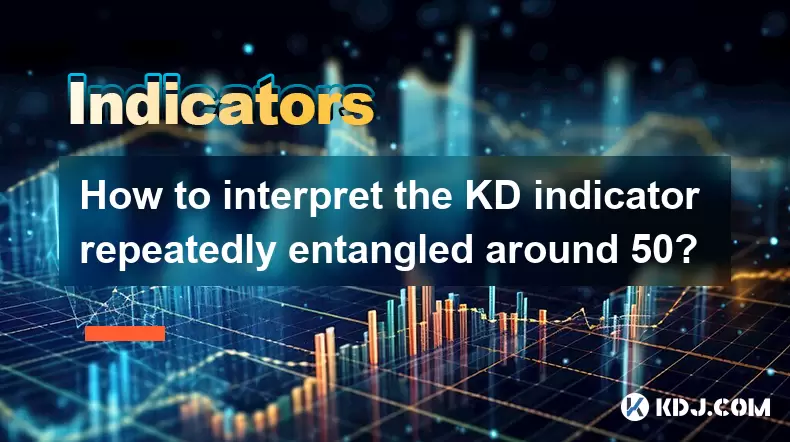
Understanding the KD Indicator in Cryptocurrency Trading
The KD indicator, also known as the Stochastic Oscillator, is a momentum oscillator used by traders to identify overbought and oversold conditions in financial markets, including cryptocurrency. It consists of two lines: the %K line and the %D line. The standard settings for the Stochastic are 14 periods, with %K representing the raw stochastic value and %D being a moving average of %K.
In the context of cryptocurrency trading, where volatility is high and trends can reverse rapidly, interpreting the KD indicator repeatedly entangled around 50 becomes crucial for making informed decisions.
The 50 level is considered neutral in the Stochastic Oscillator. When both %K and %D hover around this level without clearly entering overbought (>80) or oversold (<20) zones, it suggests indecision in the market. This behavior often occurs during consolidation phases or before significant price movements.
What Does Repeated Entanglement Around 50 Indicate?
When the KD lines keep crossing each other near the 50 mark, it indicates that neither bulls nor bears are in control. This equilibrium phase may last for varying durations depending on the time frame and market sentiment.
- Market Indecision: The price is consolidating, and there's no clear directional bias. Traders should avoid aggressive entries during such periods.
- Potential Breakout Signal: Prolonged oscillation around 50 could precede a strong breakout once the price finds a direction. Monitoring volume and order flow becomes essential during these moments.
- False Signals: In ranging markets, the KD might give misleading signals. A trader must combine this with other indicators like RSI or MACD to filter out noise.
How to Trade When KD Lines Are Stuck Around 50
Trading when the KD indicator is stuck around 50 requires patience and precise entry points. Here’s how you can approach it:
- Identify Key Support and Resistance Levels: Use horizontal levels or trendlines to determine potential breakout or breakdown zones.
- Monitor Volume: An increase in volume when the KD breaks out from the 50 zone can confirm the strength of the move.
- Use Candlestick Patterns: Bullish or bearish candlestick formations (like engulfing patterns or harami) near key levels can offer high-probability setups.
- Combine with Moving Averages: If the price crosses above or below a key moving average (like the 50 EMA), and the KD follows suit, it strengthens the trade signal.
Adjusting Settings for Better Readings
Sometimes, the default settings (14-period) of the KD indicator may not be ideal for certain cryptocurrencies due to their unique volatility profiles. Adjusting the period or smoothing factor can help reduce false signals.
- Shorten the Period: For faster reactions, especially in altcoins, try using 7 or 10-period settings.
- Smooth the %D Line: Increasing the smoothing factor from 3 to 5 can make the signal line less erratic.
- Apply Filters: Overlay Bollinger Bands or Donchian Channels to contextualize the current price action relative to recent volatility.
Common Pitfalls to Avoid
Traders often fall into traps when interpreting the KD indicator. Here are some common mistakes to watch out for:
- Overtrading During Consolidation: Jumping into trades just because the KD lines cross around 50 can lead to losses if the price remains range-bound.
- Ignoring Time Frame Discrepancies: What appears as indecision on a 1-hour chart might be part of a larger trend on the daily chart. Always check multiple time frames.
- Relying Solely on KD: No single indicator works in isolation. Always use at least one confirming tool, whether it's volume, price action, or another oscillator.
Frequently Asked Questions
Q: Can I ignore the KD indicator if it stays around 50 for too long?
A: Yes, especially if the price is in a tight range. During such times, the KD loses its predictive power, and focusing on support/resistance or volume makes more sense.
Q: Is the 50 level always a neutral zone regardless of the asset?
A: While the 50 level is generally seen as neutral, its significance can vary across assets. Some cryptocurrencies may show stronger momentum after breaking through 50 than others.
Q: How do I differentiate between a fakeout and a real breakout when KD is around 50?
A: Look for confirmation through closing prices beyond key levels, increased volume, and follow-through in the next few candles. Avoid chasing breakouts immediately.
Q: Should I adjust my stop-loss differently when trading based on KD around 50?
A: Yes. Since the market is uncertain, tighter stops are advisable to protect against sudden reversals. Also, consider using trailing stops if the price starts to move favorably.
Disclaimer:info@kdj.com
The information provided is not trading advice. kdj.com does not assume any responsibility for any investments made based on the information provided in this article. Cryptocurrencies are highly volatile and it is highly recommended that you invest with caution after thorough research!
If you believe that the content used on this website infringes your copyright, please contact us immediately (info@kdj.com) and we will delete it promptly.
- SHIB, DOGE, and the Meme Coin Mania: What's Hot and What's Not?
- 2025-06-27 21:27:13
- Crypto Picks: Avalanche and Morpho Make Grayscale's Top 20, Leaving Optimism Behind!
- 2025-06-27 20:30:12
- NodeOps, Token Generation, and Binance Wallet: A Deep Dive into Binance's Evolving Ecosystem
- 2025-06-27 20:50:12
- PancakeSwap's Telegram AMA: Your Fast Pass to Crypto's Cutting Edge
- 2025-06-27 21:27:14
- Bitcoin, Memecoins, and Returns: A Wild Ride Through Crypto Town
- 2025-06-27 20:30:12
- Cryptocurrencies Under $1: Unveiling Hidden Growth Potential in 2025
- 2025-06-27 21:15:12
Related knowledge
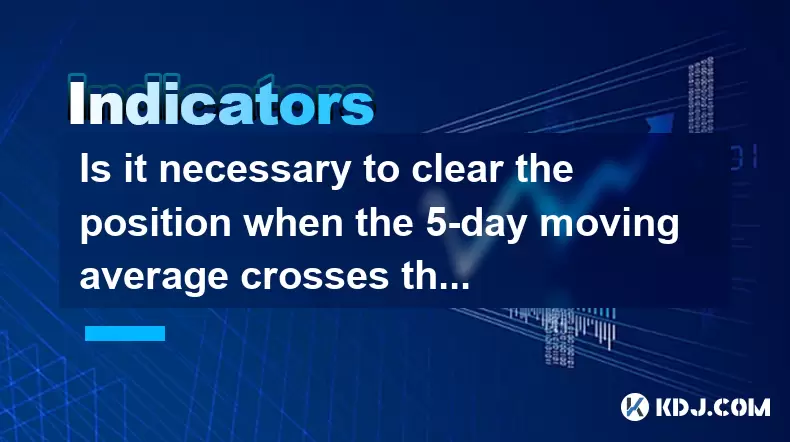
Is it necessary to clear the position when the 5-day moving average crosses the 10-day moving average?
Jun 27,2025 at 07:21pm
Understanding the 5-Day and 10-Day Moving AveragesIn the realm of technical analysis within the cryptocurrency market, moving averages play a crucial role in identifying trends and potential reversal points. The 5-day moving average (MA) and 10-day moving average are two of the most commonly used short-term indicators by traders. These tools smooth out ...
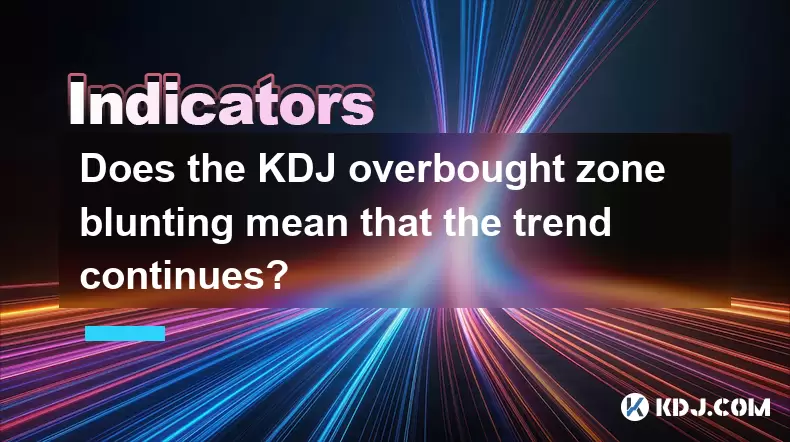
Does the KDJ overbought zone blunting mean that the trend continues?
Jun 27,2025 at 03:35pm
Understanding the KDJ Indicator in Cryptocurrency TradingThe KDJ indicator, also known as the stochastic oscillator, is a popular technical analysis tool used by traders to identify overbought or oversold conditions in asset prices. In the cryptocurrency market, where volatility is high and trends can change rapidly, understanding how to interpret the K...
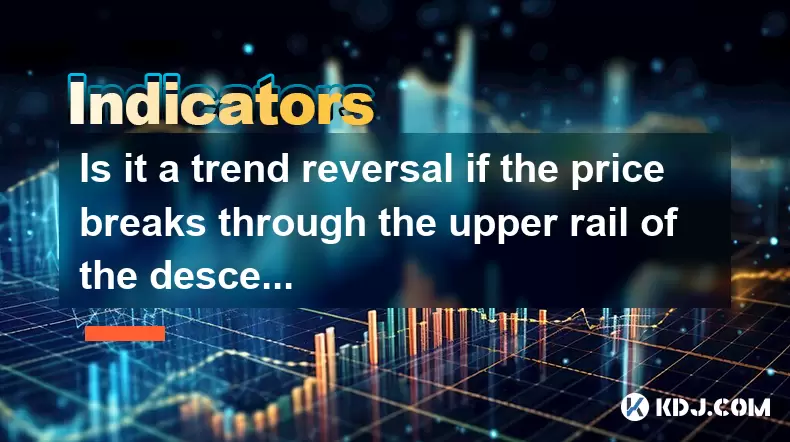
Is it a trend reversal if the price breaks through the upper rail of the descending channel and then steps back without breaking?
Jun 27,2025 at 05:35pm
Understanding the Descending Channel PatternA descending channel is a technical analysis pattern formed by two parallel downward-sloping trendlines, one acting as resistance and the other as support. This pattern typically indicates a continuation of a downtrend, where price action oscillates between these two boundaries. Traders often look for breakout...
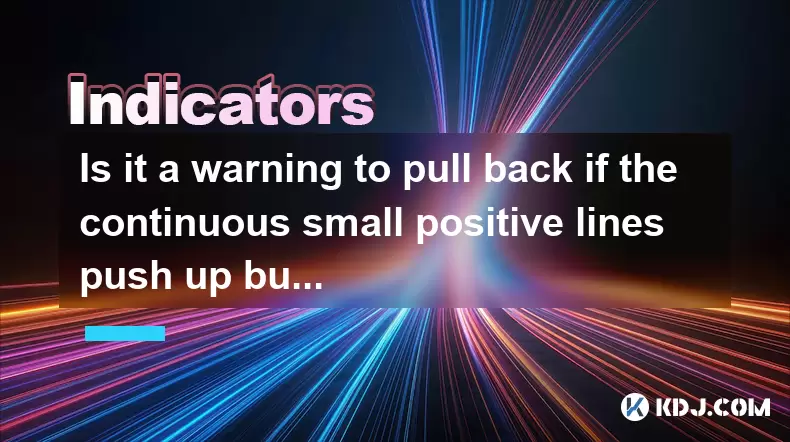
Is it a warning to pull back if the continuous small positive lines push up but the volume is insufficient?
Jun 27,2025 at 05:28pm
Understanding the Pattern: Continuous Small Positive LinesIn technical analysis, continuous small positive lines refer to a series of candlesticks where each candle closes slightly higher than its open. These candles usually have short wicks and indicate a gradual upward movement in price. Traders often interpret this pattern as a sign of steady buying ...
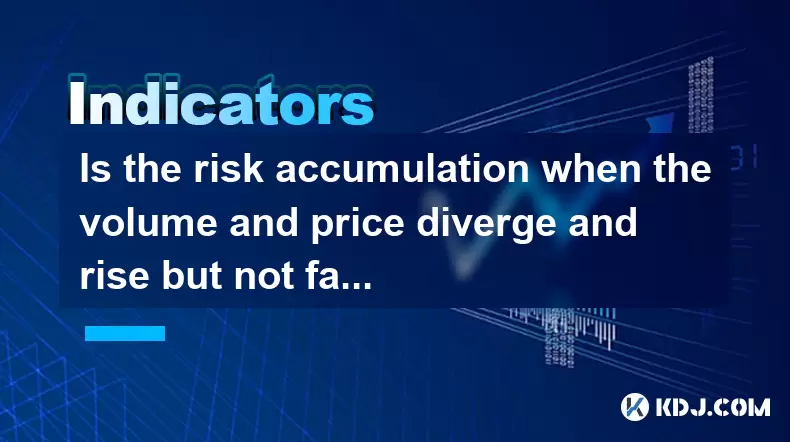
Is the risk accumulation when the volume and price diverge and rise but not fall?
Jun 27,2025 at 04:28pm
Understanding Volume and Price Divergence in Cryptocurrency TradingIn cryptocurrency trading, the relationship between volume and price plays a critical role in identifying market sentiment. When volume increases while price rises, it typically signals strong buying pressure and healthy market participation. However, when this correlation breaks—especia...
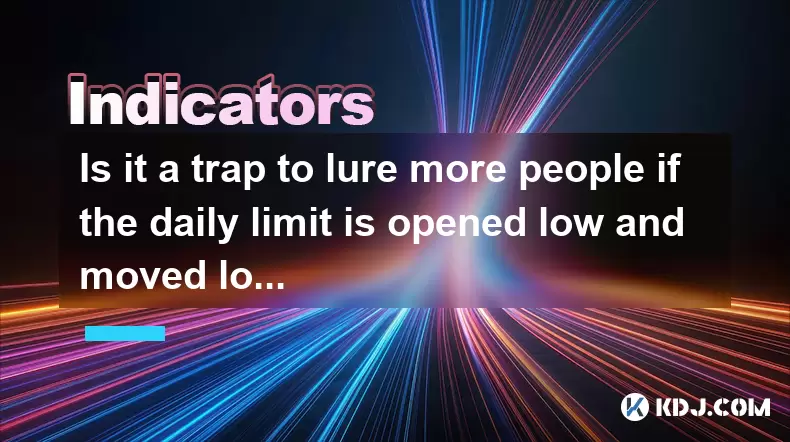
Is it a trap to lure more people if the daily limit is opened low and moved low the next day?
Jun 27,2025 at 08:21pm
Understanding the Mechanics of Daily Limits in Cryptocurrency TradingIn cryptocurrency trading, daily limits refer to the maximum percentage by which a digital asset’s price can rise or fall within a 24-hour period. These limits are often implemented by exchanges to prevent extreme volatility and protect traders from sudden, drastic losses. When a coin ...

Is it necessary to clear the position when the 5-day moving average crosses the 10-day moving average?
Jun 27,2025 at 07:21pm
Understanding the 5-Day and 10-Day Moving AveragesIn the realm of technical analysis within the cryptocurrency market, moving averages play a crucial role in identifying trends and potential reversal points. The 5-day moving average (MA) and 10-day moving average are two of the most commonly used short-term indicators by traders. These tools smooth out ...

Does the KDJ overbought zone blunting mean that the trend continues?
Jun 27,2025 at 03:35pm
Understanding the KDJ Indicator in Cryptocurrency TradingThe KDJ indicator, also known as the stochastic oscillator, is a popular technical analysis tool used by traders to identify overbought or oversold conditions in asset prices. In the cryptocurrency market, where volatility is high and trends can change rapidly, understanding how to interpret the K...

Is it a trend reversal if the price breaks through the upper rail of the descending channel and then steps back without breaking?
Jun 27,2025 at 05:35pm
Understanding the Descending Channel PatternA descending channel is a technical analysis pattern formed by two parallel downward-sloping trendlines, one acting as resistance and the other as support. This pattern typically indicates a continuation of a downtrend, where price action oscillates between these two boundaries. Traders often look for breakout...

Is it a warning to pull back if the continuous small positive lines push up but the volume is insufficient?
Jun 27,2025 at 05:28pm
Understanding the Pattern: Continuous Small Positive LinesIn technical analysis, continuous small positive lines refer to a series of candlesticks where each candle closes slightly higher than its open. These candles usually have short wicks and indicate a gradual upward movement in price. Traders often interpret this pattern as a sign of steady buying ...

Is the risk accumulation when the volume and price diverge and rise but not fall?
Jun 27,2025 at 04:28pm
Understanding Volume and Price Divergence in Cryptocurrency TradingIn cryptocurrency trading, the relationship between volume and price plays a critical role in identifying market sentiment. When volume increases while price rises, it typically signals strong buying pressure and healthy market participation. However, when this correlation breaks—especia...

Is it a trap to lure more people if the daily limit is opened low and moved low the next day?
Jun 27,2025 at 08:21pm
Understanding the Mechanics of Daily Limits in Cryptocurrency TradingIn cryptocurrency trading, daily limits refer to the maximum percentage by which a digital asset’s price can rise or fall within a 24-hour period. These limits are often implemented by exchanges to prevent extreme volatility and protect traders from sudden, drastic losses. When a coin ...
See all articles























































































